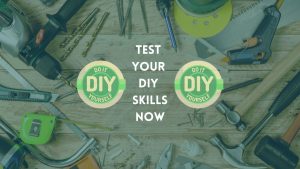
Basic DIY skills include using basic tools and performing minor repairs. These skills save money and boost self-sufficiency. In this article, we will discuss the basic DIY skills every homeowner should master.
Learning basic DIY skills offers numerous benefits. You can handle small repairs without hiring a professional, saving money. Simple tasks like fixing a leaky faucet, painting walls, or assembling furniture become manageable. These skills provide a sense of accomplishment and independence.
You also reduce the need for urgent repair services. Knowing how to use basic tools safely is crucial. DIY projects can be enjoyable and rewarding. They allow you to personalize your living space. Gaining these skills is easier than you think, with many resources available online. Start with simple projects and gradually take on more complex tasks.
Related Article: How to Learn DIY Home Renovation: Skills to Master Now!

Related Article: 16 Ways to Make Your Home Better
Essential Toolbox Must-haves
Starting with DIY projects can be fun and rewarding. Having the right tools is key. Here are the essential toolbox must-haves for every beginner.
Common Hand Tools
Hand tools are the basics. They are easy to use and very handy.
- Hammer: Useful for nails and small tasks.
- Screwdrivers: Both flat-head and Phillips are essential.
- Pliers: Great for gripping and bending items.
- Adjustable Wrench: Fits many bolt sizes.
- Measuring Tape: Ensures accurate measurements.
Power Tools For The Beginner
Power tools make tasks easier and quicker. Beginners should start with these.
- Drill: Perfect for making holes and driving screws.
- Jigsaw: Ideal for cutting shapes in wood.
- Power Sander: Smooths surfaces effortlessly.
- Electric Screwdriver: Speeds up screw driving tasks.
With these tools, you are ready for most DIY projects. Each tool has a specific use, making your work easier and more efficient.
Mastering The Art Of Painting
Painting can transform any space in your home. It adds color and freshens up the environment. Learning basic DIY painting skills can save money and give a personal touch. This section will guide you through the essentials of painting.
Prepping Surfaces
Before painting, prepare your surfaces. Clean the walls to remove dust and dirt. Use a damp cloth or sponge for cleaning.
Check for cracks or holes. Use spackle or putty to fill them. Smooth the surface with sandpaper after it dries. Ensure the surface is even and smooth.
| Step | Action |
|---|---|
| 1 | Clean the surfaces |
| 2 | Fill cracks and holes |
| 3 | Sand the surface |
Choosing The Right Paint
Selecting the right paint is crucial. Consider the room and its use. For high-traffic areas, use durable paint. For a child’s room, choose washable paint.
There are different paint finishes:
- Matte: No shine, good for hiding imperfections.
- Satin: Slight shine, easy to clean.
- Semi-gloss: More shine, very durable.
- Gloss: High shine, great for trim and doors.
Always use a primer before painting. It helps the paint adhere better and last longer.
Plumbing Fixes Made Simple
Plumbing problems can be frustrating. Simple DIY skills can solve many issues. You don’t need to call a professional for every problem. Here are some easy fixes you can do yourself.
Unclogging Drains
A clogged drain is a common issue. You can fix it with a few basic tools. A plunger and a drain snake are often enough. Follow these steps:
- Remove any visible debris from the drain.
- Use a plunger to loosen the clog. Push and pull the plunger to create suction.
- If the plunger doesn’t work, use a drain snake. Insert it into the drain and twist to break up the clog.
- Run hot water to flush the drain.
These steps can solve most clogs. If the problem persists, there may be a deeper issue.
Fixing A Leaky Faucet
A leaky faucet wastes water and increases bills. Fixing it is simple. You’ll need an adjustable wrench and replacement parts.
Follow these steps:
- Turn off the water supply to the faucet.
- Use the wrench to remove the faucet handle.
- Identify the faulty part, usually a washer or O-ring.
- Replace the faulty part with a new one.
- Reassemble the faucet and turn the water supply back on.
These steps can stop leaks quickly. Regular maintenance can prevent future issues.
Related Article: Under Deck Landscaping Ideas to Decorate: Transform Your Space!

Related Article: Refresh Your Space: Easy Tips for a Stunning Makeover
Electrical Safety And Basics
Understanding electrical safety is crucial for any DIY enthusiast. Basic electrical skills can help you tackle small projects safely. This section will guide you through the essentials, focusing on changing light fixtures and understanding circuit breakers.
Changing A Light Fixture
Changing a light fixture is a common DIY task. Follow these steps to do it safely:
- Turn off the power at the circuit breaker. Double-check with a voltage tester.
- Remove the old fixture. This usually involves unscrewing it and disconnecting the wires.
- Connect the wires of the new fixture. Typically, black to black, white to white, and ground to ground.
- Secure the new fixture in place. Use the screws provided.
- Turn the power back on and test the new light.
Understanding Circuit Breakers
A circuit breaker panel is the heart of your home’s electrical system. Here are the basics:
- Circuit breakers protect your home from electrical overloads.
- Each breaker controls a different part of your home.
- Label the breakers for easy identification.
- Reset a tripped breaker by switching it off and then on again.
- If a breaker keeps tripping, consult a professional electrician.
| Term | Definition |
|---|---|
| Voltage Tester | A device to check if electricity is flowing. |
| Ground Wire | A safety wire that prevents electrical shocks. |
| Breaker Panel | The main distribution point for electrical circuits in your home. |
Always remember, if you feel unsure, seek help from a professional. Safety first!
Carpentry Skills For Everyday Repairs
Basic DIY skills help you save money and time. Carpentry skills are essential for everyday repairs. You can fix many things at home yourself. Let’s explore some key carpentry skills you need.
Fixing A Door Hinge
A squeaky or loose door hinge is a common problem. To fix it, you need a screwdriver and some screws.
- First, remove the screws from the hinge.
- Next, take the door off its frame.
- Then, check the hinge for wear and tear.
- If the hinge is damaged, replace it with a new one.
- Align the new hinge on the door frame.
- Insert and tighten the screws securely.
- Finally, reattach the door to the frame.
Simple Woodworking Projects
Woodworking projects can be simple and fun. Here are a few easy projects to start with:
- Bookshelf: Build a small bookshelf using wooden planks and nails.
- Picture Frame: Create a picture frame with some wooden strips and glue.
- Birdhouse: Construct a birdhouse using scrap wood and paint.
| Project | Materials | Tools |
|---|---|---|
| Bookshelf | Wooden planks, nails | Hammer, saw |
| Picture Frame | Wooden strips, glue | Clamps, saw |
| Birdhouse | Scrap wood, paint | Hammer, nails |
With these projects, you can practice your carpentry skills. You will gain confidence to tackle bigger tasks. Remember, safety comes first. Always use protective gear and work in a safe environment.
10 Difficult Skills that Pay Off Forever>>
Conclusion
Mastering basic DIY skills can transform your home and save money. You gain confidence and problem-solving abilities. Start small and practice regularly. Your efforts will pay off with time. Enjoy the satisfaction of completing projects yourself. Keep learning and growing your skills for endless possibilities.
Related Article: Home Improvement Ideas for Small Houses – A Complete Guide
You may also read: Test Your DIY Skills Now
- Very Small Kitchen Ideas on a Budget: Innovative Solutions for Small Kitchen Challenges - September 3, 2024
- Sustainable Home Improvements: A Complete Guide to Consider - August 29, 2024
- The Ultimate Guide to Styling Your Living Room Side Table Decor - June 22, 2024







1 thought on “Basic DIY Skills Every Homeowner Should Know About It”